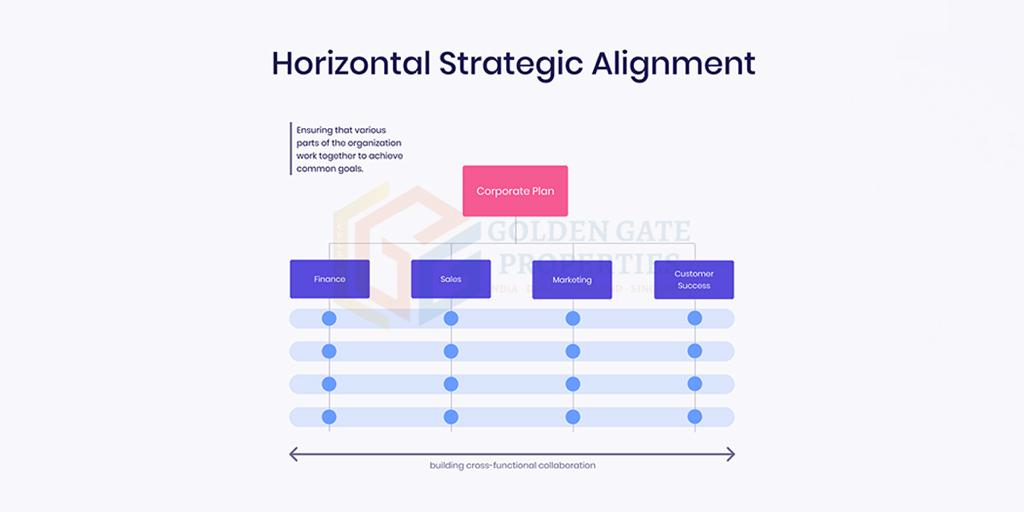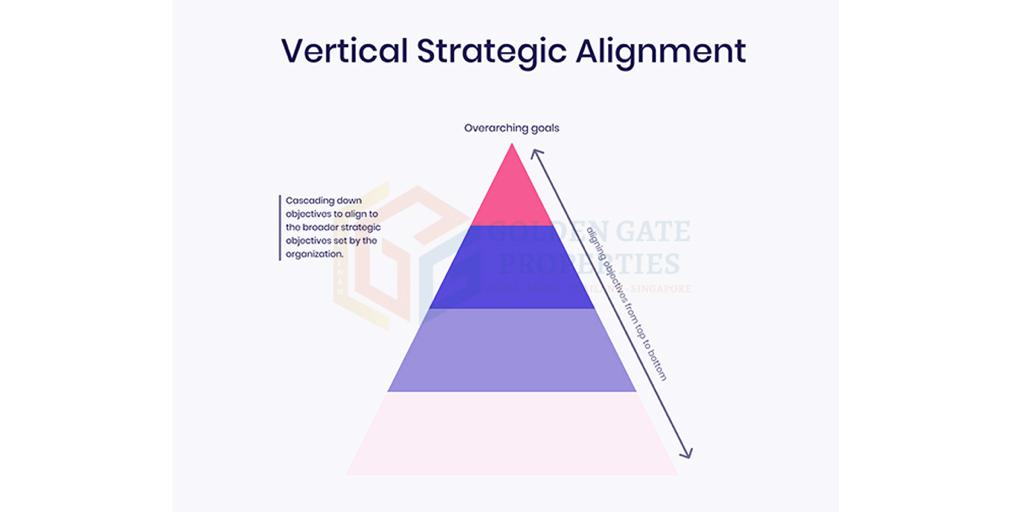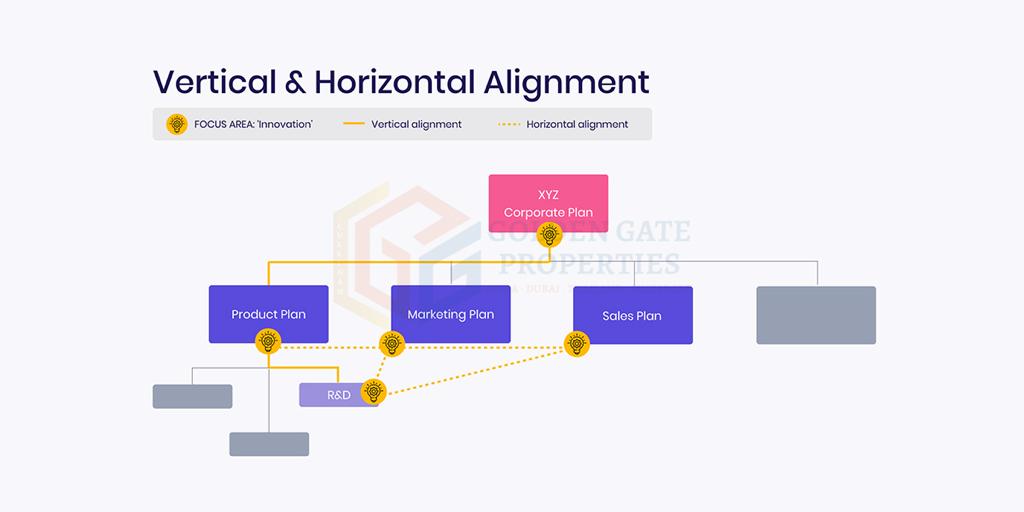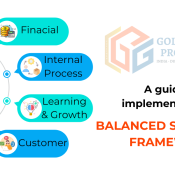
Aligning strategies horizontally and vertically
Strategic alignment is critical in today’s changing corporate environment. A well-aligned organisation can better fulfil its objectives, adapt to market changes, and develop a culture of cooperation and creativity. Horizontal and vertical alignment are two fundamental principles in strategic alignment.
In this post, we’ll look at the distinctions between horizontal and vertical strategic alignment, how they contribute to organisational success, and which one to pick for optimum efficacy.
Deciding Between Horizontal and Vertical Strategic Alignment
First, let’s address a key issue:
Ultimately, you don’t have to pick between horizontal and vertical strategic alignment. A fully aligned organisation will combine both of these notions for the best overall results.
However, you must have a thorough understanding of the distinctions between them as well as how to implement each specific type of strategic alignment.
If you’re adopting a systemic strategy for the first time in your organisation, you’ll generally want to start with one fundamental type of alignment and then gradually incorporate the other as you get more experience managing strategy at the organisational level.
Understanding Horizontal Strategic Alignment.
Horizontal strategic alignment is the coordination of efforts across many business units or divisions within an organisation. It is about ensuring that different areas of the organisation collaborate seamlessly to achieve common goals. Horizontal alignment is a crucial method for avoiding silos and encouraging collaboration, all of which are critical to the organization’s overall performance.

Shared focus areas are a stimulus for horizontal alignment.
Focus Areas are certain theme areas that organisations have identified as vital to their success. These can be rather broad, such as ‘customer experience’, ‘innovation’, or ‘operational excellence’. However, the most effective Focus Areas are often highly relevant to the organization’s current difficulties, such as ‘Product Market Fit’ or ‘Increase Profit Margins’.
Having all separate business units follow a set of common Focus Areas is a good strategy to propel an organisation towards strong horizontal alignment. That is, the centralised strategy function would designate, say, four Focus Areas and then demand every single business unit to perform their strategic planning directly inside them.
Breaking down silos: the potential of horizontal alignment.
One of the key issues that organisations confront is the presence of silos. Silos form when departments or business units function in isolation, focused entirely on their aims without regard for the larger organisational goals. A lack of communication and collaboration can result in duplication of efforts, inefficiencies, and missed opportunities.
Horizontal alignment is a great technique to break down such silos. The reason is that it forces cross-functional alignment (typically through shared Focus Areas) while also providing broad insight into what other departments are working on.
Vertical alignment can not do this, and when employed without some components of horizontal alignment, it can aggravate organisational silos.
Challenges in horizontal alignment
Every organisation should adopt some kind of horizontal strategy alignment. However, overreliance on horizontal alignment might be problematic. Larger organisations, particularly those with several layers of administration, frequently fail to implement just horizontal alignment. The same is true for bigger organisations attempting to establish alignment around a single set of common Focus Areas.
This is because larger organisations often have considerably more highly specialised functions and positions. In this instance, the common Focus Areas established at the organisational level might become rather remote and removed from the day-to-day operational reality of a highly specialised role in the business.
For example, a common Focus Area of ‘Digitization’ may be established at a company’s corporate level. A larger organisation may employ a marketing staff that specialises in outdoor media. Requiring the outdoor media team (who have nothing to do with ‘Digitization’) to align their goals with the ‘Digitization’ common Focus Area is likely to be a difficult or futile exercise, straining the credibility and relevance of the strategic planning process for that team. In this case, vertical alignment is a more effective strategy to relate the outdoor media team’s operations to the organization’s overall goals.
Another issue with horizontal alignment and common Focus Areas is that they might hinder innovation and empowerment within an organisation. If horizontal alignment becomes unduly forced (for example, via the usage of common Focus Areas), teams in the business with outstanding ideas for new things may abandon those ideas because they do not fit into the pre-defined shared Focus Areas with which they have been requested to align. Again, in this case, vertical alignment is likely to create better outcomes and provide more opportunities for individuals and teams to brainstorm throughout the strategic planning process.
Recommended read: The Levels of Strategy: Differences and How to Apply Them
Understanding Vertical Strategic Alignment.
While horizontal alignment emphasises collaboration across business units, vertical alignment ensures that everyone in the organisation is working towards the same underlying goals. Vertical strategic alignment is the process of cascading down objectives such that they all lead up to the organization’s bigger strategic objectives.

As you can see, vertical and horizontal alignments are not mutually exclusive.
The significance of objective-to-objective alignment.
Objective-to-objective alignment is an effective method for attaining vertical strategic alignment. Individual or team objectives are intimately linked to the strategic objectives of the layer above them in the organisation. This guarantees that every work, project, or goal at the individual level contributes directly to the attainment of larger organisational objectives.
The advantages of vertical strategic alignment.
Vertical strategic alignment provides several benefits to organisations. First and foremost, it gives employees at all levels clarity and a feeling of purpose. When people understand how their job contributes to the bigger organisational goals, they gain a sense of purpose and drive. Second, it improves organisational agility by ensuring that all decisions and actions are consistent with the strategic goal.
Challenges of Vertical Strategic Alignment
Vertical strategic alignment is probably the most typical type of alignment for most organisations. It works well in principle, however, there are several downsides.
The first is that it can allow a lot of leeway for interpretation, which may not be ideal depending on the current business scenario. For example, an organisational strategy target may be ‘Grow our margins by 20%’. A vertical alignment strategy would allow each business unit to plan how they will do this. The marketing team may choose to do this by aggressively increasing sales volume, hence cutting unit costs. The production team, on the other hand, may attempt to do this by lowering factory working hours to save money in a completely different method. Both of these goals will lower expenses on their own, but they are really in contradiction with one another (one aims to boost sales while the other aims to reduce capacity).
A similar issue with vertical strategic alignment (at least when employed in isolation) is that it does not give any direction for where a business unit’s goals should be concentrated. It possibly provides more empowerment than employing shared Focus Areas in a horizontal alignment strategy. However, this has the disadvantage of potentially spreading resources too thinly over an already stretched organisation. Implementing a horizontal alignment paradigm may be highly advantageous.
Achieving the Right Balance: Horizontal and Vertical Alignment
Achieving organisational excellence necessitates finding the appropriate balance of horizontal and vertical alignment. While horizontal alignment promotes cooperation, concentration, and efficiency across business divisions, vertical alignment empowers and contextualises the whole organisation.
As you begin to systemize your organisational plan, it’s a good idea to choose one major technique from horizontal and vertical alignment that best suits your use case. But then rapidly consider how to combine the two techniques.
Case Study: Balancing horizontal and vertical alignment.
Let’s look at a hypothetical case study to demonstrate the necessity of balancing horizontal and vertical alignment.
XYZ Corporation highlighted ‘Innovation’ as an important focus area. The Product division was given major responsibility for developing unique ideas and solutions. The R&D team then matched its objectives with those of the Product division, which in turn were closely related to the organization’s overall aim of becoming a market leader in cutting-edge technology. Here’s an example of vertical alignment.
Simultaneously, the marketing and sales divisions were assigned the same Focus Area of ‘Innovation’. Marketing developed objectives to communicate the creative aspects of products to clients, while sales concentrated on identifying market demands and preferences to influence R&D initiatives.

Here’s an example of horizontal alignment.
This example shows how a shared Focus Area (Innovation) may be shared horizontally across multiple business units while remaining vertically aligned by tying individual objectives to the overall organisational aim.
The Path To Strategic Success: Developing Horizontal And Vertical Alignment
In the complicated and ever-changing world of business, attaining strategic alignment is an ongoing process. Organisations must actively promote horizontal and vertical alignment to succeed.
Organisations may build a strong framework for success by carefully allocating common Focus Areas among business units and implementing objective-to-objective alignment (whether within or outside of those shared Focus Areas).
Organisations may negotiate the challenges of today’s business world and emerge as industry leaders by breaking down silos, encouraging teamwork, and ensuring that every individual’s activities contribute to the bigger strategic aims.
Discover how GGP can help you achieve horizontal and vertical strategic alignment. Get in connect with one of our Strategy Execution experts.



